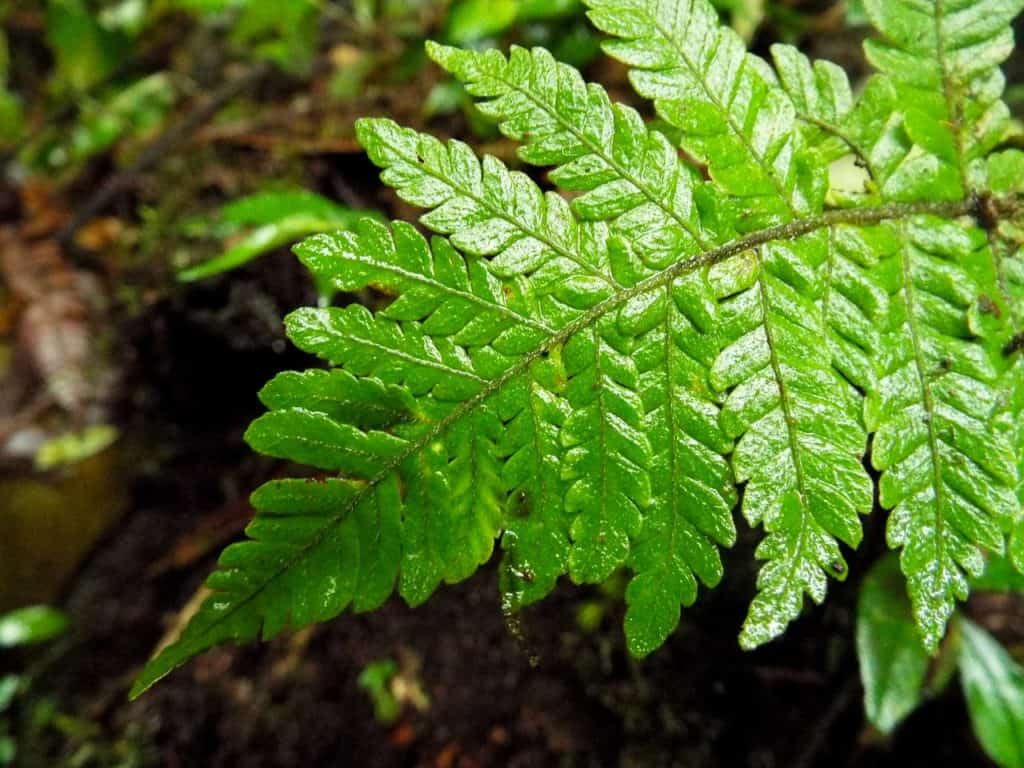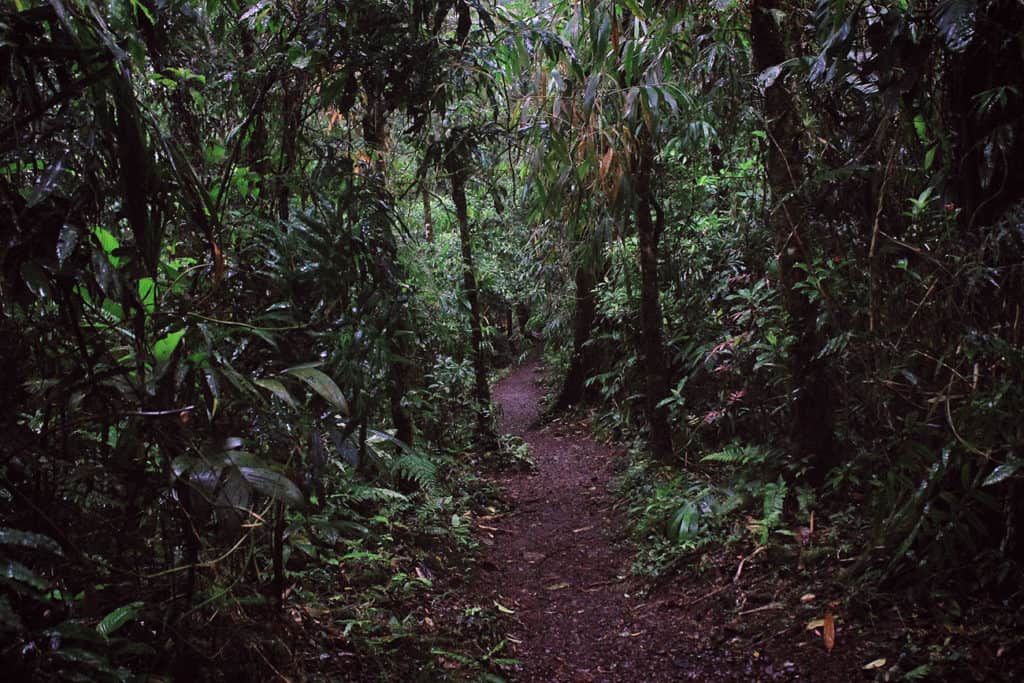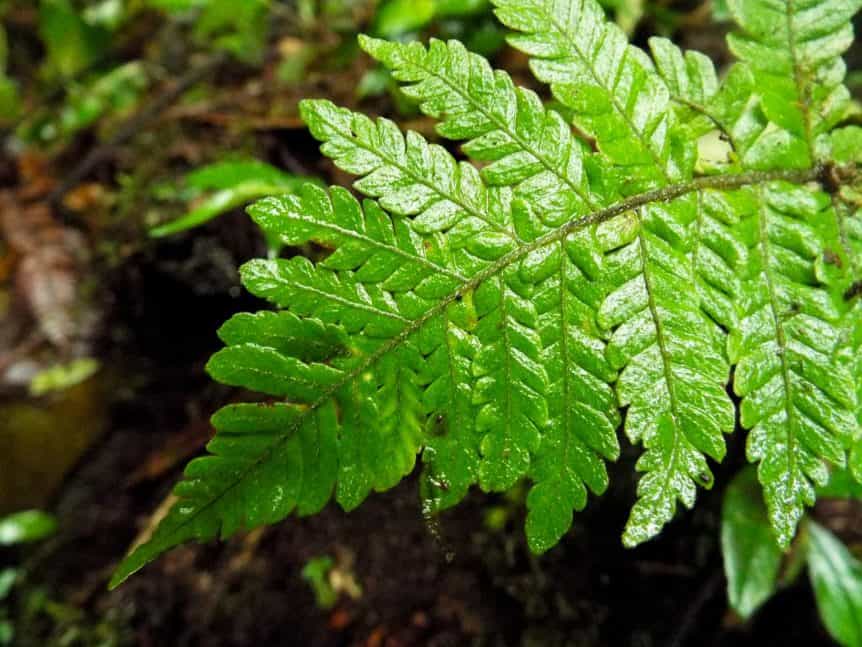
Braulio Carrillo National Park is a protected area in central Costa Rica and is one of the largest national parks in the country, covering an area of approximately 39,000 hectares. The park is known for its diverse and abundant wildlife, including monkeys, sloths, jaguars, tapirs, and over 500 species of birds.
It is also home to several species of vegetation, including primary and secondary forest, as well as cloud forests and wetlands.
When it comes to National Parks in Costa Rica, Braulio Carrillo National Park is one of the best. Although not as well-known as Corcovado National Park, it is one of the most accessible with lots of trails and a fun way to spend a day hiking.
There is a lot to know about this National Park so let’s get started with the basics.
The Basics
Braulio Carrillo National Park was established in 1978 and is named after Braulio Carrillo Colina, a 19th-century Costa Rican president who played a key role in the country’s independence. The park was created to protect the extensive rainforests and other unique ecosystems that are found in the area, as well as to preserve the rich biodiversity of the region.
Over the years, the park has become an important tourist destination, attracting visitors from around the world with its lush landscapes, diverse wildlife, and opportunities for outdoor recreation. In recent years, the park has also been at the forefront of conservation efforts, with a focus on sustainable tourism and the protection of the park’s fragile ecosystems.
The 44,099-hectare park (84 percent of which is primary forest) extends from 2,906 meters above sea level atop Volcán Barva down to 36 meters at La Selva, in Sarapiquí in the Caribbean lowlands.
This represents the greatest altitudinal range of any Costa Rica Park. Temperature and rainfall vary greatly and are extremely unpredictable. At higher elevations, temperatures range from 15° to 22° C.
At the Carrillo, Magsasay, and El Ceibo biological stations, in the Atlantic lowlands, the average temperature is much warmer, ranging from 22° to 30° C. Annual rainfall is between 400 and 800 centimeters.
Rains tend to diminish in March and April. With luck, you might even see the sun.Encompassing five life zones ranging from tropical wet to cloud forest, Braulio Carrillo provides a home for 600 identified species of trees, more than 500 species of birds, and 135 species of mammals, including:
- Howler monkeys
- Capuchin monkeys
- Tapirs
- Jaguars
- Pumas
- Ocelots
- Deer
- Pacas
- Raccoons
- Peccaries
Highlights also include hundreds of butterfly species and excellent birdwatching. Quetzals are common at higher elevations. The rare solitary eagle and umbrella bird live here. And toucans, parrots, and hummingbirds are ubiquitous.
The park protects several tree species fast disappearing elsewhere from overharvesting: among them, the palmito, valued for its “heart,” and the tepezcuintle, which has been chosen as the park’s official mascot.
Those elephant-ear-size leaves common in Braulio Carrillo are sombrilla del pobre (poor man’s umbrella).
Location of Braulio Carrillo National Park

The main entrance is approximately 19 km northeast of San José, where there is a tollbooth on the Guápiles Highway. Zurquí, the main ranger station is on the right two km north of the tunnel. Drive slowly; you come upon it suddenly on a bend.
The station has basic maps, sold in the information center. The Puesto Carrillo ranger station, 22.5 km farther down the road, has a tollbooth in the center of the road for those entering the park from Limón.
Two other stations–Puesto El Ceibo and Puesto Magsasay–lie on the remote western fringes of the park, reached by rough trails from just south of La Virgen, on the main road to Puerto Viejo de Sarapiquí.
You can also enter the Volcán Barva sector of the park via the Puesto Barva ranger station, three km northeast of Sacramento (see the Slopes of Barva section, above), and via Alto Palma and Bajo Hondura, accessible from San José via San Vicente de Moravia or from the Guápiles Highway at a turnoff about three km south of the main park entrance.
Trails In Braulio Carrillo
Hiking in Braulio Carrillo National Park, Costa Rica, is considered to be challenging due to the park’s rugged terrain, steep inclines, and varying weather conditions. However, it is also known for its scenic beauty, diverse flora and fauna, and opportunities for wildlife viewing.
You can choose from several trails of varying difficulty levels, ranging from short nature walks to multi-day backpacking trips. It is important to be well-prepared for hiking in the park, with proper footwear, clothing, and supplies, and to always follow park regulations and guidelines for safety.
The hiking trails at the park offer a diverse range of experiences, from short nature walks to multi-day backpacking trips. The trails vary in difficulty, with some being relatively easy and well-maintained, while others are steep and challenging.
Two short trails lead from Puesto Carrillo: Los Botarramas is approximately 1.6 km; La Botella, with waterfalls and views down the Patria Canyon, is 2.8 kilometers. For additional exercise as you head down La Botella, turn left at a sign labeled Sendero.
This path takes you 30 minutes deeper into the forest to the Río Sanguijuela. South of Puesto Carrillo is a parking area on the left (when heading north) with a lookout point and a trail to the Río Patria, where you can camp (no facilities). Another parking area beside the bridge over the Río Sucio (“Dirty River”) has picnic tables and a short loop trail.
A one-km trail leads from south of the Zurquí Tunnel to a vista point. The entrance is steep, the rest easy.
Another trail–the Sendero Histórico–is shown on the national park map as following the Río Hondura all the way from Bajo Hondura to the Guápiles Highway at a point near the Río Sucio. Check with a ranger.
Things to do in Braulio Carrillo
Here are 2 of the most popular activities to do when visiting this National Park. If you don’t want to drive there, most tour operators in San José can arrange half-day or full-day tours to Braulio Carrillo and will usually include one or both
Aerial Tram in Braulio Carillo
This is an extraordinary opportunity to see a primary forest and its natural splendor at first hand. The open-air gondolas with canvas awnings seat 6 passengers and a naturalist guide.
You will see all the different layers of the rainforest, from the floor to the treetops. The canopy is home to an enormous amount of flora and fauna. Eager to find light and space, many plants have colonized the treetops, turning them into small, independently functioning ecosystems.
Colorful tropical flowers, fascinating plants and trees are quite common, and you will learn how they work together to form a complete ecosystem.
The Aerial Tram tour covers a distance of 2.6 kilometers through primary rainforest. The ride lasts about an hour and twenty minutes and travels at the leisurely pace of two kilometers per hour, allowing you the chance to fully explore this exciting part of the forest.
Canopy Zipline Tour
This is a way to start or end any trip to Costa Rica with an adrenaline rush of going on a zipline through the rainforest.
Ziplining through the forest is an exhilarating way to gain a new perspective on the park’s natural beauty and to learn about the important role that this protected area plays in preserving the region’s rich biodiversity.
You will be at a maximum height of 459 feet from where you can get a “birds-eye” view of the green mountains and exotic rainforest gardens.
The zipline, the longest being what’s called the “Adrena Line” that is about 3000 feet long, has 10 lines and 14 platforms which cross over not only the flora and fauna but also the Molinete river.
If you take the tour from San Jose, which most people do, instead of renting a car , you will be gone for about 6 hours.
Note that the Canopy Zipline Tour is a separate experience from the park’s hiking trails and may have different hours of operation and fees.


